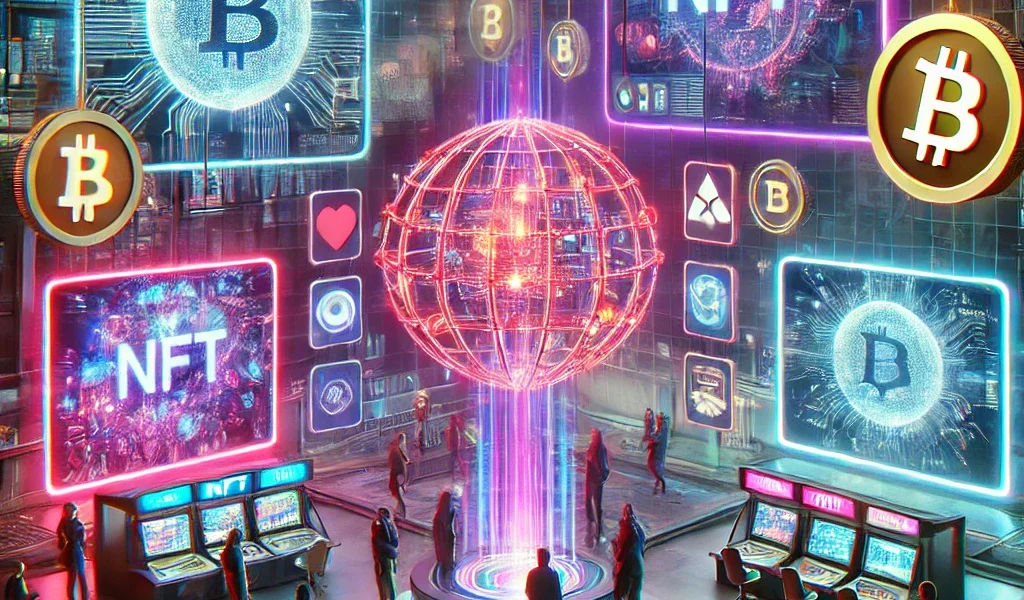Non-Fungible Tokens (NFTs) have taken the digital world by storm, revolutionizing the way artists, collectors, and investors interact with digital assets. As the NFT space continues to evolve, choosing the right NFT marketplace has become essential for buyers, sellers, and traders looking for the best experience.
In this comprehensive guide, we compare the top NFT marketplaces of 2025 based on features, fees, security, and usability, helping you find the best platform for your needs.
What is an NFT Marketplace?
An NFT marketplace is an online platform where users can buy, sell, trade, and mint NFTs. These marketplaces operate on blockchain technology, ensuring ownership authenticity and transaction transparency. Some platforms specialize in art, music, gaming assets, or domain names, while others offer a broad range of NFTs.
Top NFT Marketplaces in 2025
1. OpenSea – The Largest and Most Versatile NFT Marketplace
Pros:
- Supports Ethereum, Polygon, and Solana blockchains.
- Extensive variety of NFTs, including digital art, music, and collectibles.
- User-friendly interface with built-in wallet support.
Cons:
- High transaction fees (Ethereum gas fees can be costly).
- Competition from new NFT platforms with lower fees.
2. Rarible – A Community-Driven Marketplace
Pros:
- Multi-chain support (Ethereum, Flow, and Tezos).
- Users can mint NFTs without coding knowledge.
- Decentralized governance through the $RARI token.
Cons:
- Limited support for high-value auctions.
- Some collections may have lower liquidity compared to OpenSea.
3. SuperRare – The Premium NFT Art Platform
Pros:
- Curated platform featuring high-quality, exclusive digital art.
- Strong community of artists and collectors.
- Artists receive royalties on secondary sales.
Cons:
- Higher fees compared to open marketplaces.
- Limited to art-based NFTs, not suitable for gaming assets or collectibles.
4. Foundation – The Creator-Centric NFT Marketplace
Pros:
- Focuses on supporting independent artists and creators.
- Easy-to-use interface with an emphasis on auctions.
- Royalties ensure artists benefit from resales.
Cons:
- Only supports Ethereum blockchain.
- Requires an invitation to join, limiting access.
5. LooksRare – Reward-Based Marketplace for Traders
Pros:
- Users earn $LOOKS token rewards for trading NFTs.
- Lower fees compared to OpenSea.
- Strong focus on active traders and liquidity.
Cons:
- High competition among sellers.
- Some collections may have less visibility compared to OpenSea.
6. Binance NFT – The Exchange-Backed NFT Marketplace
Pros:
- Backed by Binance, one of the largest crypto exchanges.
- Low transaction fees compared to Ethereum-based marketplaces.
- Offers NFT staking and mystery boxes.
Cons:
- Limited artist curation compared to SuperRare or Foundation.
- Some collections may have lower resale value.
7. Nifty Gateway – The High-Profile NFT Platform
Pros:
- Partnerships with celebrities and major brands.
- Allows fiat currency purchases (credit/debit cards).
- Premium NFTs with high resale value.
Cons:
- Limited to exclusive drops.
- Requires KYC verification, reducing anonymity.
8. Magic Eden – The Leading Solana-Based NFT Marketplace
Pros:
- Low transaction fees and fast processing times.
- Focus on Solana-based NFTs, offering gaming assets and metaverse collectibles.
- Strong community engagement.
Cons:
- Limited Ethereum-based NFT support.
- Smaller marketplace compared to OpenSea.
9. Zora – The Open-Source NFT Platform
Pros:
- Fully decentralized and community-governed.
- Supports carbon-neutral minting options.
- Transparent fee structure with low costs.
Cons:
- Not as widely adopted as OpenSea or Rarible.
- Requires technical knowledge to use some advanced features.
10. Blur – The NFT Marketplace for Pro Traders
Pros:
- Advanced trading tools, including batch buying and selling.
- Zero marketplace fees.
- Integration with multiple blockchains.
Cons:
- Focuses primarily on high-volume traders.
- Less beginner-friendly than other platforms.
Factors to Consider When Choosing an NFT Marketplace
1. Blockchain Support
Each marketplace operates on specific blockchains, such as Ethereum, Solana, or Binance Smart Chain. Consider which blockchain best suits your needs based on fees and compatibility.
2. Fees and Costs
Transaction fees vary by platform. Some marketplaces charge high gas fees (Ethereum-based), while others offer lower costs (Solana, Tezos, Binance Smart Chain).
3. Security and Trust
Choose a marketplace with a strong reputation, robust security measures, and transparent smart contract usage to avoid scams and fraud.
4. NFT Categories
Some platforms specialize in digital art, while others focus on gaming assets, music, or domain names. Select a marketplace aligned with your NFT interests.
5. User Experience and Community Support
A beginner-friendly interface and active community support can make buying and selling NFTs easier.
Future Trends in NFT Marketplaces
- Cross-Chain Compatibility: More platforms are integrating multi-chain support to enhance accessibility.
- Enhanced Utility NFTs: NFTs with real-world applications, such as event tickets and memberships, are gaining traction.
- AI-Generated NFTs: AI-driven artwork is becoming a popular trend in NFT marketplaces.
- Increased Regulatory Clarity: Governments are exploring NFT regulations to ensure legal compliance and reduce fraud.
- Integration with the Metaverse: More NFT marketplaces are collaborating with metaverse projects to enhance digital ownership experiences.
Conclusion
NFT marketplaces have revolutionized the digital asset space, offering creators, collectors, and traders a decentralized way to engage in the NFT economy. Platforms like OpenSea, Rarible, SuperRare, and Binance NFT cater to different needs, whether you’re an artist, investor, or enthusiast.
Before choosing an NFT marketplace, consider factors like fees, blockchain support, and security. As the NFT landscape evolves, staying informed about emerging trends and platforms will ensure you make the best decisions in the ever-changing digital collectibles market.




